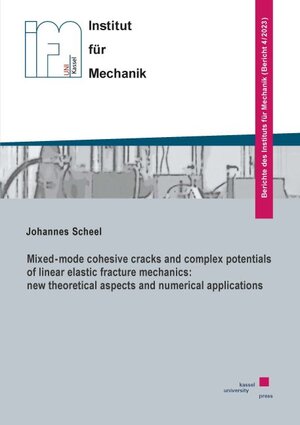Mixed-mode cohesive cracks and complex potentials of linear elastic fracture mechanics: new theoretical aspects and numerical applications
von Johannes ScheelThe J-integral is a powerful tool to determine crack tip loading, where the Jintegral vector also allows for the quantification of crack deflection applying the J-integral vector criterion. Although originally formulated for sharp cracks with a crack tip singularity, the J-integral vector can also be derived for cracks with cohesive zones. The relation and proof of equivalency of the first coordinate of the vector and the crack tip opening displacement, typically associated with the cohesive zone model, has been around for over 60 years, however, only for the simple mode-I loading case. In the mixed-mode generalization, the first coordinate is complemented by a coupling integral term and is uniquely related to the cohesive potential at the physical crack tip and thus to the crack tip opening displacement. The second coordinate, however, depends on the solution of the specific boundary value problem in terms of stresses and displacement gradients at the cohesive zone faces. The generalized relation is verified exemplarily for the Griffith crack. The crack fields are calculated in closed form based on complex potentials of linear elastic fracture mechanics, where potentials given in established literature prove to contain inconsistencies, resulting in irregular stresses and displacements. The origin of these irregularities is investigated, leading to a critical review of classical works by, inter alia, Muskhelishvili and Westergaard. Improved holomorphic complex potentials are introduced. The numerical investigation of the cohesive crack tip loading provides insight into the sensitivity of the J-integral vector with respect to the numerical approximation. The interaction of sharp and cohesive cracks is studied in terms of crack tip loading and crack growth, considering various geometries, cohesive parameter sets and bi-materials.






